On Sunday 27 March 2022 we went to Old Head where we met Dr Louise Scally a marine ecologist who has surveyed the underwater and shore habitats of Clew Bay. Louise brought us to reef habitat at Old Head. This habitat type is of special conservation interest along with many others in Clew Bay. The intertidal reef at Old Head has a variety of brown and red seaweeds which provide habitat for winkles, snails and whelks.

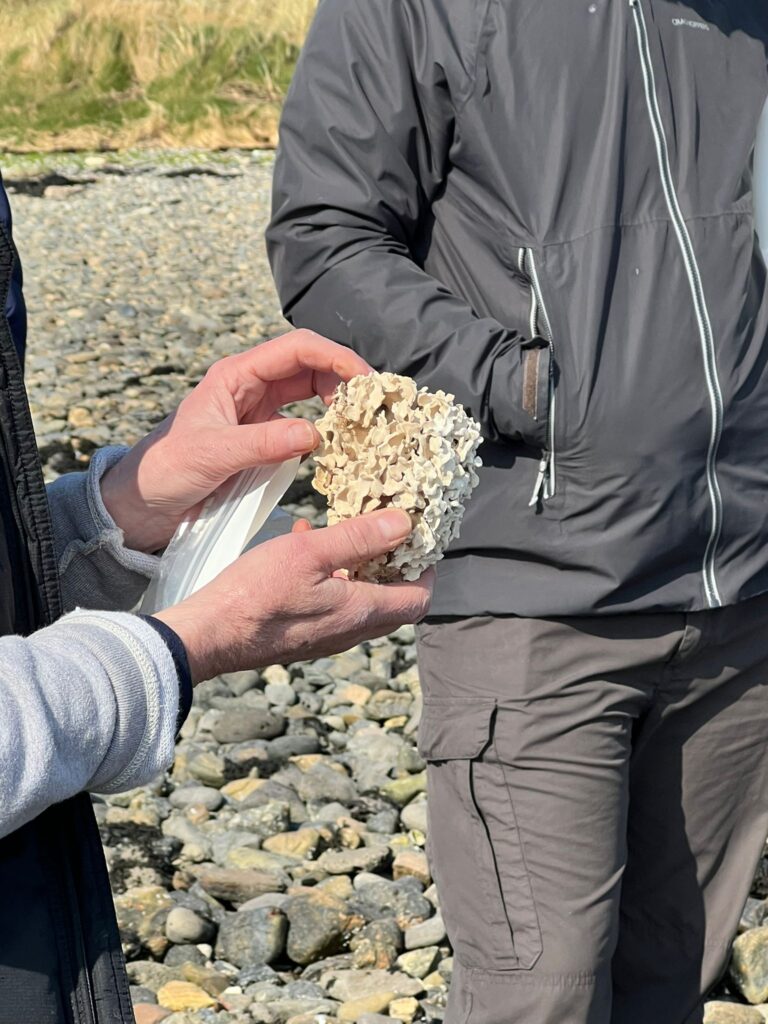
A nearby rockpool had anemones, coralline algae, limpets and hermit crabs. Conor Ryan’s biofacts brought the habits of some rocky shore creatures to life with stories of limpets returning to the same spot every day after their grazing trips under cover of the full tide.
Never far from the ecosystem story is the disrupting presence of alien invasive species and Old Head was no different; Sargassum muticum or Japanese wireweed has taken hold in the rock pools of Clew Bay. Similar to invasive species on the land it can out compete native marine flora diminishing diversity in plant and animal life.
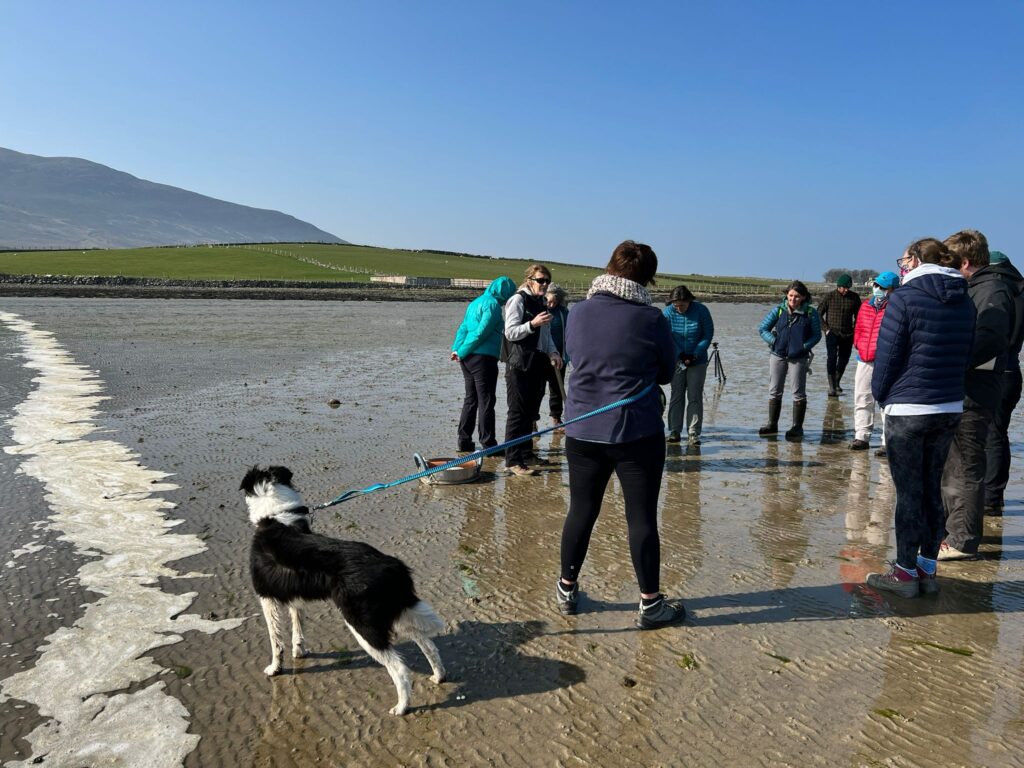
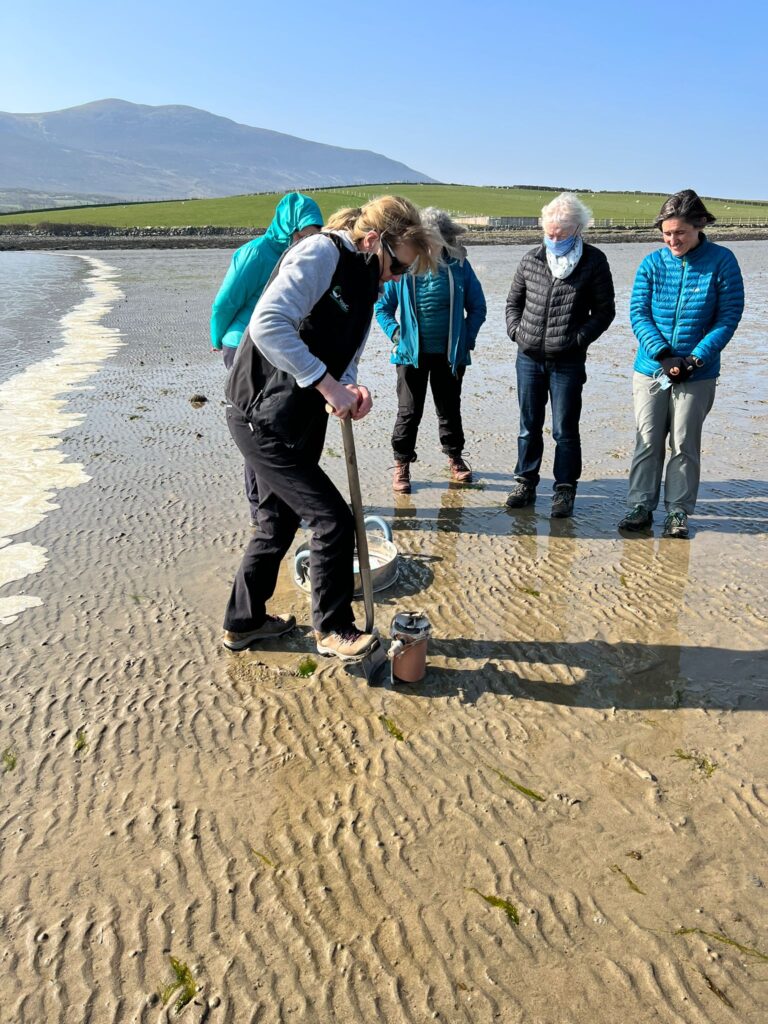
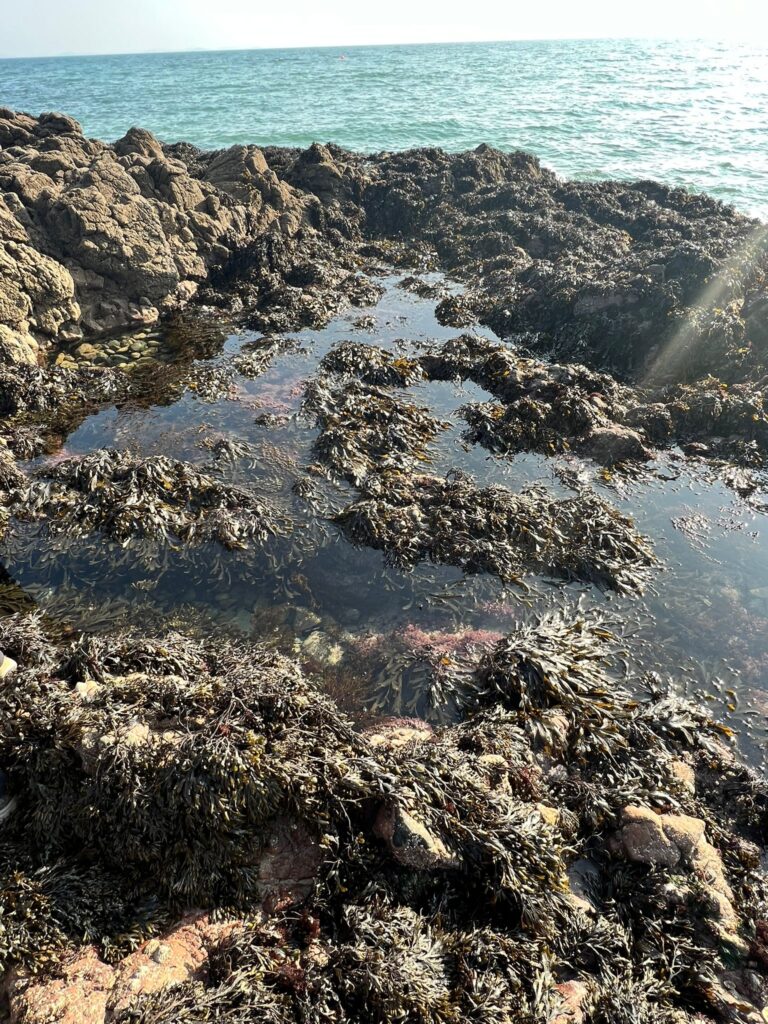
Louise pointed out the difficulties of both monitoring benthic habitats (diving, underwater gear needed) and of raising awareness of what is there and the pressure it is under. These amazing and vital habitats can be easily overlooked in their underwater and out of sight form.
Next we went to Bertragh where Louise sampled the intertidal sediments on the east side of the spit. The intertidal sediments of the upper shore were still uncovered by the sea but the creatures in the upper shore have to endure long periods of exposure to the air and numbers and diversity of animal life is quite low. Plant life is absent as there is nothing for plants to attach to.
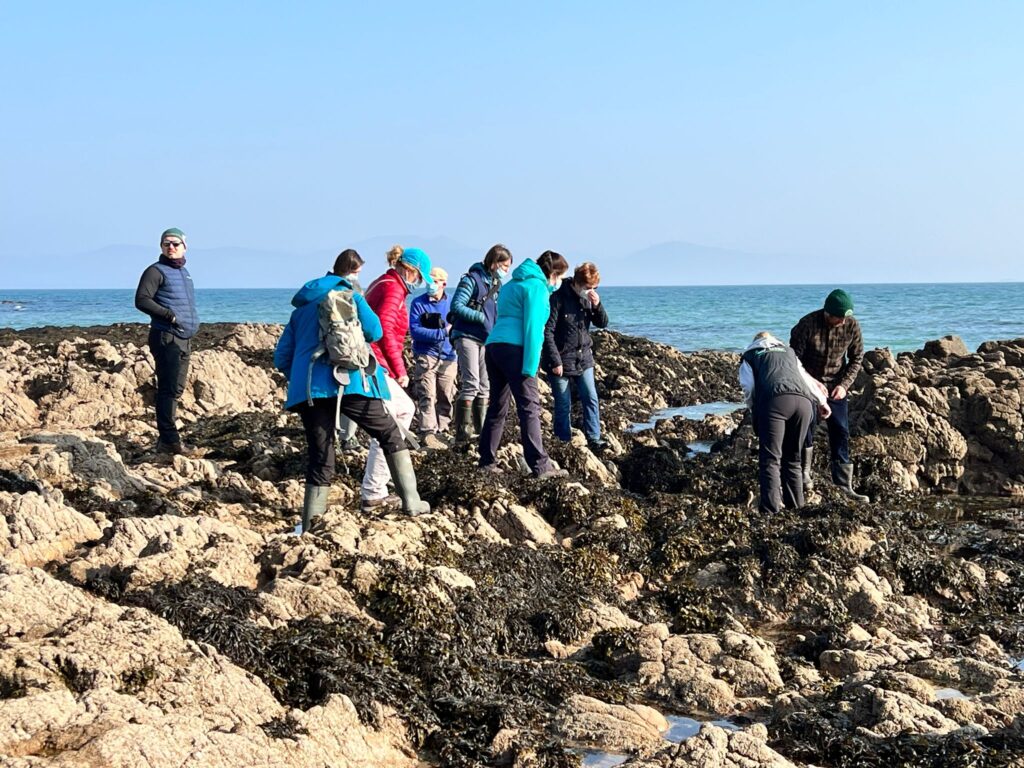
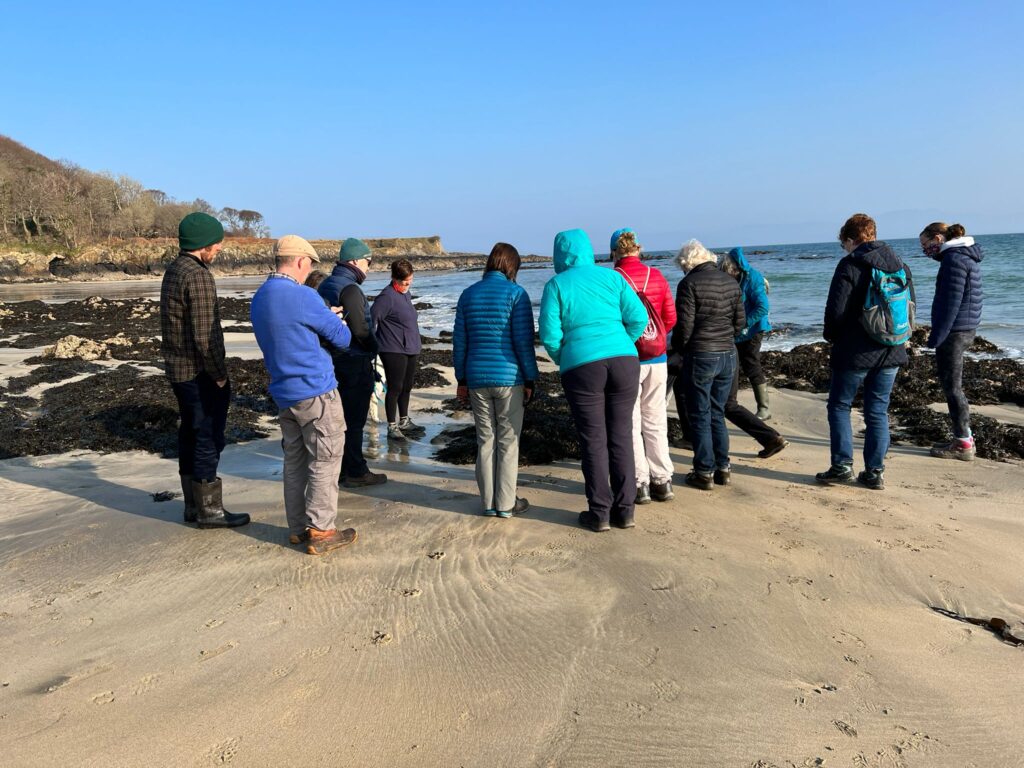
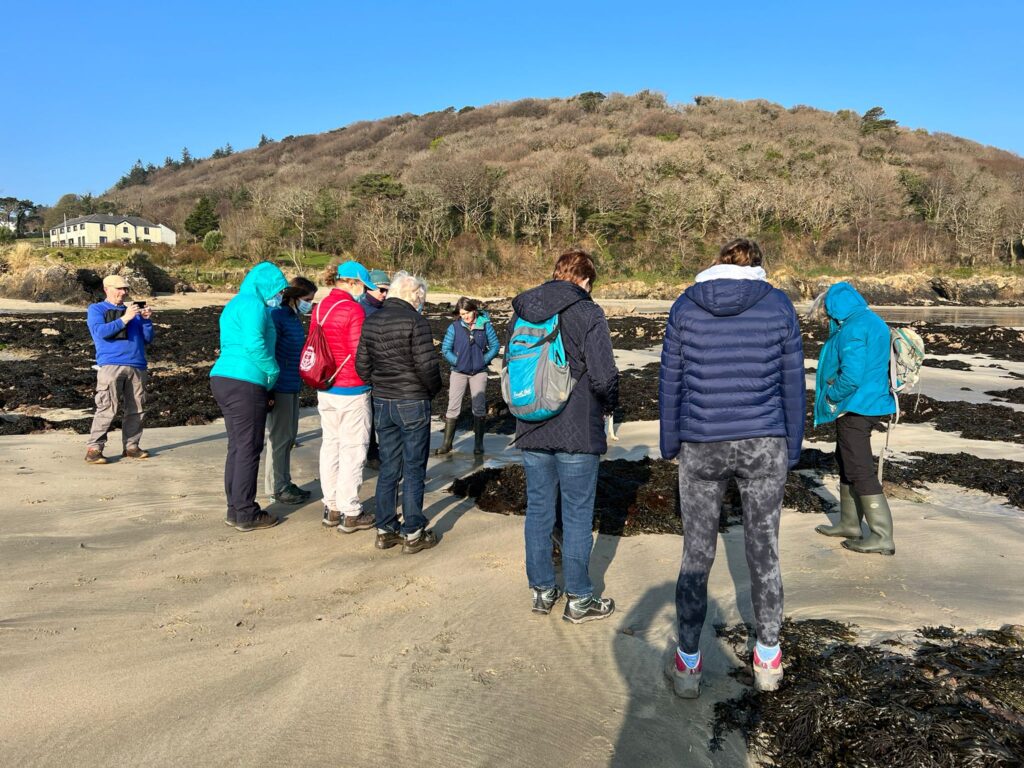
From a core pushed into and pulled from the mudflat, the sediment was then washed through a sieve to reveal the worms that live within. Living in the sediment the worms burrow when the tide is out and filter feed when the tide is in. They are always at risk of becoming prey for the shore birds which come to Clew Bay in their hundreds to spend the winter months.
Louise talked about seagrass or eelgrass beds in Clew Bay. These beds are mainly sub tidal and are an important habitat for other marine animals including juvenile fish. Seagrass has been identified as an important plant for capturing carbon (blue carbon) – and as Louise pointed out – seaweeds are important in this regard too (they too photosynthesise). Protecting marine algae and seagrass from pressures such as eutrophication, sedimentation, dredging and unsustainable harvesting is essential.
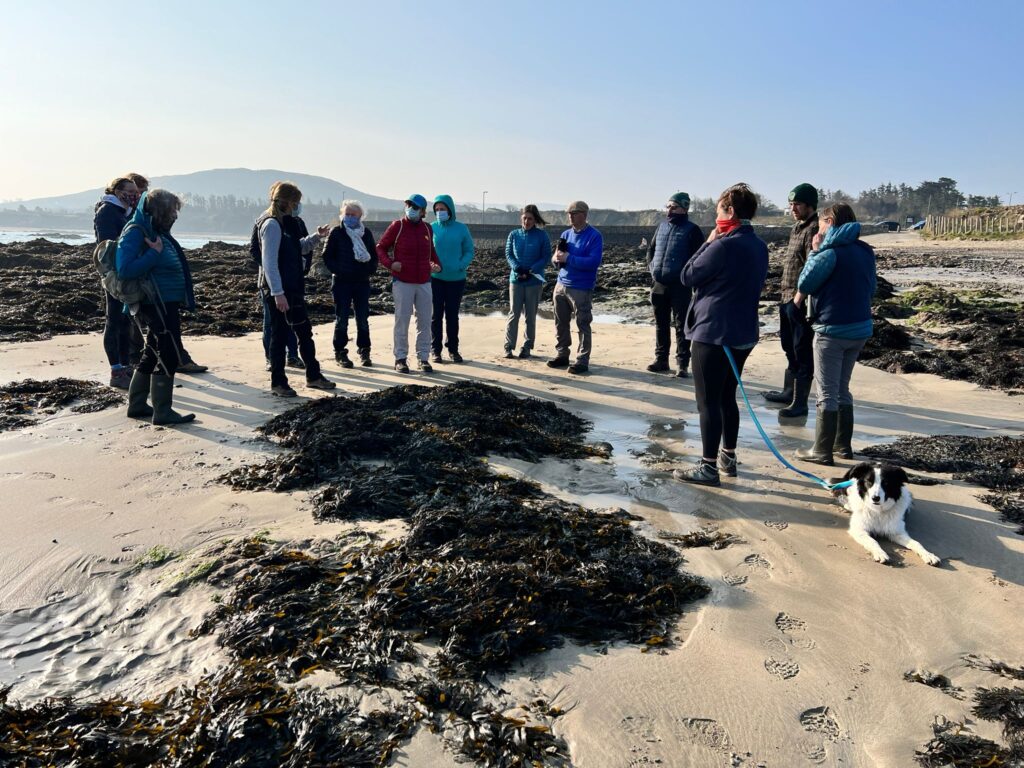
The marine environment is linked to the rivers and to the land; sediment and nutrients are washed into the sea and unless there is lots of water movement (flushing) they will settle in estuaries and bays and can damage the marine life. A stark example of this was Mulroy Bay where the seagrass beds have been replaced by an algae which is tolerant of high nutrient levels; the seagrass beds have all gone in just a ten year period.
It was great to have so many locals out and about with Louise to find out more about Clew Bay and its hidden marine life.
For a very informative talk about seagrasses check out this TED talk by Carlos M. Duarte.